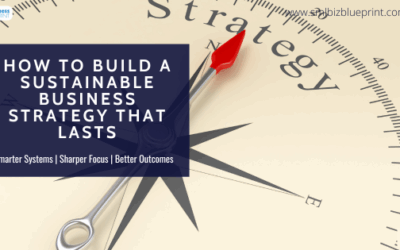In the high-stakes world of Formula 1 racing, every decision can make the difference between victory and defeat.
But beyond the thrill of the track lies a wealth of strategic insights and best practices that transcend the world of motorsports.
In this blog post, we’ll explore seven critical lessons that business owners can glean from Formula 1, drawing parallels between the relentless pursuit of performance on the racetrack and the competitive landscape of entrepreneurship.
From continuous innovation and data-driven decision-making to adaptability and strategic planning, we’ll delve into actionable strategies inspired by Formula 1’s quest for excellence.
Join us as we uncover the secrets to success in the fast lane and discover how applying these principles can propel your business to new heights of achievement.

#1 Continuous Innovation and Efficiency
In Formula 1, the pursuit of continuous innovation is ingrained in the DNA of every team.
From the sleek curves of the car’s aerodynamic design to the intricacies of its hybrid power unit, every aspect undergoes relentless scrutiny and refinement.
This commitment to innovation extends beyond mere aesthetics; it’s about maximising efficiency and performance on the track.
Formula 1 teams invest heavily in research and development, pushing the boundaries of technology to gain a competitive edge.
For example, aerodynamic advancements have led to streamlined bodywork that reduces drag while generating sufficient downforce to keep the car glued to the track.
Similarly, introducing hybrid power units in 2014 marked a paradigm shift in the sport, with teams striving to extract more power from a given amount of fuel while adhering to strict fuel usage regulations.
These innovations have translated into tangible efficiency gains over the years.
Statistical analysis reveals that lap times have consistently decreased while fuel efficiency has improved, demonstrating the tangible impact of technological advancements on performance.
Key Messages:
- Innovation is the cornerstone of success in Formula 1 and business alike. By embracing a culture of continuous innovation, businesses can stay ahead of the competition and drive growth.
- Efficiency is not just about doing things faster; it’s about doing things smarter. Formula 1 teams optimise every aspect of the car to maximise performance while minimising resource consumption.
- Businesses should prioritise investment in research and development to drive innovation and efficiency. By staying at the forefront of technological advancements, they can gain a competitive advantage in their respective industries.
By incorporating these continuous innovation and efficiency principles into their operations, business owners can position themselves for long-term success in today’s fast-paced and ever-evolving marketplace.
#2: Data-Driven Decision Making
In Formula 1, data is king.
Every aspect of the car’s performance is meticulously monitored and analysed in real-time, providing teams with valuable insights to inform strategic decisions.
From telemetry data capturing engine performance to tire degradation metrics, the information available allows teams to optimise race strategies and maximise performance on the track.
Data-driven decision-making is not just a buzzword; it’s a fundamental principle underpinning success in Formula 1 and business.
By harnessing the power of data analytics, Formula 1 teams can predict race outcomes, identify areas for improvement, and gain a competitive edge over their rivals.
For example, predictive analytics algorithms analyse historical data to forecast race scenarios and identify optimal pit-stop strategies.
By strategically timing pit stops based on tyre wear and fuel levels, teams can gain crucial time on their competitors and improve their chances of success.
Furthermore, data analysis plays a vital role in post-race debriefs, where teams dissect every aspect of the race to identify areas for improvement.
By reviewing telemetry data, video footage, and driver feedback, teams can pinpoint performance bottlenecks and develop targeted solutions for future races.
Key Messages:
- Data-driven decision-making empowers businesses to make informed choices based on concrete evidence rather than intuition or guesswork.
- The effective use of data analytics can uncover hidden patterns and trends, providing valuable insights that drive strategic decision-making and performance optimisation.
- Businesses should invest in data analytics capabilities and cultivate a culture that values data-driven insights. By leveraging data effectively, they can gain a competitive advantage and achieve sustainable growth.
By embracing a data-driven approach to decision-making, business owners can unlock new opportunities for growth and innovation, positioning themselves for success in today’s data-driven landscape.
#3: Adaptability and Flexibility
In the fast-paced world of Formula 1 racing, adaptability is not just a desirable trait—it’s a necessity for survival.
Races unfold in real-time, with ever-changing track conditions, weather patterns, and competitors’ unpredictable maneuvers.
In this dynamic environment, Formula 1 teams must remain agile and flexible, ready to adjust their strategies on the fly to stay competitive.
One critical lesson business owners can learn from Formula 1 is the importance of adaptability and flexibility in navigating uncertain circumstances.
Just as Formula 1 teams must adapt to changing track conditions, businesses must be prepared to pivot in response to market shifts, technological advancements, and unexpected challenges.
Formula 1 teams showcase adaptability in various ways, from adjusting tyre compounds mid-race to capitalising on safety car periods to optimise pit stop strategies.
These strategic decisions often make the difference between podium finishes and disappointment, highlighting the critical role of adaptability in achieving success on the track.
For businesses, adaptability means being willing to embrace change, experiment with new ideas, and pivot when necessary. Whether responding to shifts in consumer preferences, adapting to regulatory changes, or seizing new market opportunities, businesses must remain nimble in the face of adversity.
Key Messages:
- Adaptability is a hallmark of resilience and success in Formula 1 and business. By cultivating a mindset of flexibility, businesses can better navigate uncertainty and thrive in dynamic environments.
- Embracing change allows businesses to stay ahead of the curve and capitalise on emerging opportunities—those who resist change risk being left behind in an ever-evolving marketplace.
- Businesses should foster a culture of adaptability, empowering employees to embrace change, innovate, and continuously improve. By encouraging experimentation and learning from failure, businesses can foster a culture of resilience and growth.
Drawing inspiration from Formula 1’s emphasis on adaptability and flexibility, business owners can position themselves to thrive in an increasingly volatile and unpredictable business landscape.

#4: Team Collaboration and Specialization
In Formula 1, success is not achieved through individual brilliance alone; it requires the seamless collaboration of a diverse team of specialists working towards a common goal.
Each member of a Formula 1 team brings unique expertise and skills to the table, whether it’s aerodynamic design, engine optimisation, or race strategy.
Formula 1 teams achieve remarkable feats of engineering and performance on the track by leveraging the collective talents of their team members.
This emphasis on teamwork and specialisation holds valuable lessons for businesses. Just as Formula 1 teams rely on collaboration to achieve success, businesses must foster a culture of teamwork and cooperation to drive innovation and achieve their objectives.
Effective collaboration is essential for achieving sustainable growth, whether it’s cross-functional collaboration between departments or strategic partnerships with external stakeholders.
Formula 1 teams demonstrate the power of collaboration in various ways, from the seamless coordination of pit-stop crews to the synchronised efforts of engineers and designers in developing new car designs.
By leveraging their team members’ diverse skills and expertise, Formula 1 teams can overcome challenges, innovate, and continuously improve their performance.
For businesses, fostering collaboration means breaking down silos, encouraging open communication, and recognising the value of diverse perspectives.
By creating an environment where team members feel empowered to contribute their ideas and expertise, businesses can unleash creativity, drive innovation, and achieve their goals more effectively.
Key Messages:
- Collaboration is the cornerstone of success in Formula 1 and business alike. By bringing together individuals with diverse skills and expertise, teams can achieve more together than they could alone.
- Effective collaboration requires open communication, mutual respect, and a shared sense of purpose. Businesses should cultivate a collaborative culture that values teamwork and encourages knowledge sharing.
- Specialisation allows individuals to focus on their areas of expertise, driving innovation and excellence. By leveraging the unique talents of team members, businesses can achieve superior results and gain a competitive advantage in their industry.
By embracing the principles of teamwork and specialisation exemplified by Formula 1 teams, businesses can create a culture of collaboration that drives innovation, fosters creativity, and propels them towards success.
#5: Risk Management and Resilience
Risk is an inherent part of the game in the high-speed world of Formula 1 racing. From the moment the lights go out on the starting grid, teams and drivers face the constant threat of crashes, mechanical failures, and unpredictable weather conditions.
Despite these risks, Formula 1 teams must effectively manage uncertainty and remain resilient in adversity.
Business owners can learn valuable lessons from Formula 1’s risk management and resilience approach.
Just as Formula 1 teams employ strategic tactics to mitigate risks on the track, businesses must develop robust risk management strategies to navigate challenges and protect their interests.
Effective risk management is essential for business success, identifying potential threats, implementing contingency plans, or adapting to unforeseen circumstances.
Formula 1 teams employ various risk management strategies to mitigate the inherent dangers of racing. Safety protocols, such as stringent crash testing and driver training programs, help minimise the risk of injury in accidents.
Additionally, teams conduct thorough risk assessments before each race, considering factors such as track conditions, weather forecasts, and competitor strategies to develop informed race strategies.
Resilience is key to weathering storms and emerging stronger from adversity for businesses. Businesses can better withstand unexpected challenges and disruptions by building flexibility in their operations, diversifying their revenue streams, and maintaining strong stakeholder relationships.
Moreover, businesses should view setbacks as opportunities for growth and learning, using adversity as a catalyst for innovation and improvement.
Key Messages:
- Risk management is essential for business continuity and success. Businesses can safeguard their interests and assets by identifying threats and implementing proactive measures to mitigate risks.
- Resilience is the ability to adapt and thrive in the face of adversity. Businesses should cultivate a resilient mindset, embracing challenges as opportunities for growth and innovation.
- Effective risk management requires a proactive approach, open communication, and a commitment to continuous improvement. By fostering a risk awareness and resilience culture, businesses can confidently navigate uncertainty and emerge stronger from setbacks.
By incorporating the principles of risk management and resilience exemplified by Formula 1 teams, businesses can better prepare themselves to navigate the unpredictable challenges of today’s business landscape.
#6: Continuous Learning and Improvement
In Formula 1, success is not solely determined by the fastest car or the most talented driver; it’s also about the relentless pursuit of improvement. Formula 1 teams constantly strive to push the boundaries of performance, seeking out every possible advantage to gain an edge over their rivals.
This commitment to continuous learning and improvement is a core tenet of success in Formula 1 and holds valuable lessons for businesses.
One key lesson business owners can learn from Formula 1 is embracing a culture of continuous learning and improvement.
Just as Formula 1 teams conduct rigorous testing and analysis to refine their cars and strategies, businesses must proactively seek opportunities for growth and innovation.
Whether investing in employee training and development, soliciting customer feedback, or analysing market trends, businesses must constantly evolve to stay ahead of the competition.
Formula 1 teams exemplify the principles of continuous learning and improvement in various ways. From post-race debriefs where teams dissect every aspect of their performance to ongoing research and development efforts to uncover new technologies and techniques, Formula 1 teams leave no stone unturned in their quest for excellence.
For businesses, fostering a continuous learning and improvement culture means encouraging employees to embrace experimentation, learn from failure, and adapt to changing circumstances.
By providing opportunities for professional development, fostering a culture of innovation, and rewarding initiative and creativity, businesses can create an environment where continuous improvement becomes ingrained in the company culture.
Key Messages:
- Continuous learning and improvement are essential for staying competitive in today’s fast-paced business environment. By embracing a growth and innovation mindset, businesses can adapt to changing market conditions and drive sustainable growth.
- Formula 1 teams demonstrate the power of iteration and experimentation in achieving success. Businesses should encourage a similar approach, embracing failure as a stepping stone to success and fostering a culture of innovation and creativity.
- Investing in employee development and providing opportunities for learning and growth is key to fostering a culture of continuous improvement. Businesses can unlock their full potential and drive organisational success by empowering employees to expand their skills and knowledge.
By drawing inspiration from Formula 1’s commitment to continuous learning and improvement, businesses can position themselves for long-term success in today’s rapidly evolving marketplace.

#7: Strategic Planning and Long-Term Vision
In Formula 1, success is not just about winning individual races; it’s about executing a carefully crafted strategic plan that positions teams for long-term success.
From multi-year development cycles for new car designs to race tactics tailored to specific tracks and conditions, Formula 1 teams exemplify the importance of strategic planning and long-term vision in achieving their goals.
Business owners can learn valuable lessons from Formula 1’s approach to strategic planning and long-term vision.
Just as Formula 1 teams develop comprehensive race strategies to maximise their chances of success, businesses must formulate strategic plans that align with their overarching goals and objectives.
Whether expanding into new markets, launching innovative products, or implementing cost-saving measures, strategic planning is essential for effectively guiding business decisions and allocating resources.
Formula 1 teams employ various strategic planning techniques to achieve their objectives. They analyse track data, assess competitor strengths and weaknesses, and develop race strategies that optimise performance while minimising risk.
Moreover, teams invest in long-term research and development projects to gain a competitive edge in future seasons, demonstrating their commitment to sustainable success.
For businesses, strategic planning is not a one-time event but an ongoing process that requires regular review and adjustment. By setting clear objectives, conducting thorough market analysis, and anticipating future trends and challenges, businesses can develop strategic plans for long-term growth and success.
Key Messages:
- Strategic planning is essential for achieving long-term success in Formula 1 and business. By setting clear goals and developing actionable strategies, businesses can navigate uncertainty and achieve their objectives more effectively.
- Long-term vision provides a roadmap for success, guiding business decisions and resource allocation. Businesses can ensure sustainable growth and profitability by aligning short-term actions with long-term goals.
- Flexibility is key to effective strategic planning. Businesses must be willing to adapt their strategies in response to changing market conditions, emerging trends, and unforeseen challenges.
By adopting the principles of strategic planning and long-term vision demonstrated by Formula 1 teams, businesses can chart a course for sustained success and competitive advantage in today’s dynamic and unpredictable business environment.
Conclusion
In the fast-paced world of Formula 1, the pursuit of excellence is a never-ending journey characterised by continuous innovation, data-driven decision-making, adaptability, and strategic planning.
As we’ve explored in this blog post, business owners can glean valuable insights from Formula 1’s approach to success and apply them to their own endeavours.
From embracing a continuous learning and improvement culture to fostering collaboration and specialisation within their teams, business owners have much to learn from Formula 1’s emphasis on innovation, efficiency, and resilience. By incorporating these principles into their operations, businesses can position themselves for long-term success in today’s competitive marketplace.
As you reflect on the lessons shared in this blog post, consider how to apply them to your business.
How can you harness the power of data to drive informed decision-making?
How can you foster a culture of collaboration and innovation within your team?
What steps can you take to develop a strategic plan that aligns with your long-term vision?
We encourage you to take action and implement these insights into your business practices.
Whether you invest in employee development, refine your strategic planning processes, or embrace new technologies and methodologies, the opportunities for growth and improvement are endless.
Remember, success is not just about crossing the finish line first; it’s about the journey of continuous learning, adaptation, and evolution.
By embracing the lessons from Formula 1, you can propel your business to new heights of achievement and success.
Thank you for joining us on this journey. We wish you luck in applying these principles to your business endeavours.
Ready to take your business to the next level? Start by implementing the lessons learned from Formula 1 into your own operations.
Whether optimising your data analytics capabilities, fostering a culture of collaboration and innovation, or developing a strategic plan for long-term growth, now is the time to take action.
FAQs:
Q1 How can businesses benefit from adopting a culture of continuous innovation?
A1: Businesses prioritising innovation can stay ahead of the competition, drive growth, and differentiate themselves in the marketplace. By continuously seeking new opportunities for improvement and innovation, businesses can adapt to changing market conditions, meet evolving customer needs, and maintain a competitive edge.
Q2: Why is data-driven decision-making important for business success?
A2: Data-driven decision-making allows businesses to make informed choices based on concrete evidence rather than intuition or guesswork. Businesses can uncover valuable insights, identify trends and patterns, and optimise their strategies for maximum impact by analysing data. This approach leads to better outcomes, increased efficiency, and improved decision-making across all aspects of the business.
Q3: How can businesses foster collaboration and specialisation within their teams?
Businesses can foster collaboration by creating an environment that encourages open communication, teamwork, and mutual respect among team members. By promoting a culture of collaboration, businesses can leverage their employees’ diverse skills and expertise to drive innovation, solve complex problems, and achieve common goals. Additionally, businesses can encourage specialisation by providing opportunities for employees to develop and hone their skills in specific areas, allowing them to become experts in their respective fields.
Q4: What role does risk management play in business resilience?
Risk management is essential for business resilience, allowing businesses to identify, assess, and mitigate potential threats and vulnerabilities. By proactively managing risks, businesses can minimise the impact of adverse events, protect their assets and interests, and maintain business continuity. A robust risk management strategy enables businesses to adapt to changing circumstances, anticipate potential challenges, and respond effectively to unexpected events.
Q5: How can businesses develop a strategic plan that aligns with their long-term vision?
A5: A strategic plan defines the organisation’s long-term vision, goals, and objectives. Businesses should thoroughly analyse their internal and external environment, identify strengths, weaknesses, opportunities, and threats, and formulate actionable strategies to achieve their objectives. The strategic plan should be flexible, adaptable, and regularly reviewed to ensure alignment with changing market conditions and business priorities.
Q6: What practical steps can businesses take to foster a culture of continuous learning and improvement?
A6: Businesses can foster a culture of continuous learning and improvement by providing employee development and training opportunities, encouraging knowledge sharing and collaboration, and rewarding innovation and initiative. Additionally, businesses can establish feedback mechanisms to solicit input from employees, customers, and stakeholders and use this feedback to drive organisational change and improvement. By promoting a lifelong learning and growth culture, businesses can adapt to changing market conditions, innovate, and remain competitive in the long run.
Q7: How can businesses effectively implement the lessons from Formula 1 into their operations?
A7: Businesses can effectively implement the lessons learned from Formula 1 by identifying key principles and strategies applicable to their own operations, such as continuous innovation, data-driven decision-making, adaptability, and strategic planning. They can then develop actionable plans to integrate these principles into their business processes, aligning them with their long-term goals and objectives. By taking a systematic approach and committing to continuous improvement, businesses can leverage the insights from Formula 1 to drive success in their endeavours.
Other Articles
A Strategic Guide to Prioritizing AI Initiatives for Small Business Success
Mastering Lead Generation: Strategies and Actionable Steps for Marketing Success
Unlock Business Growth: Essential Systems Every Small Business Owner Needs!




